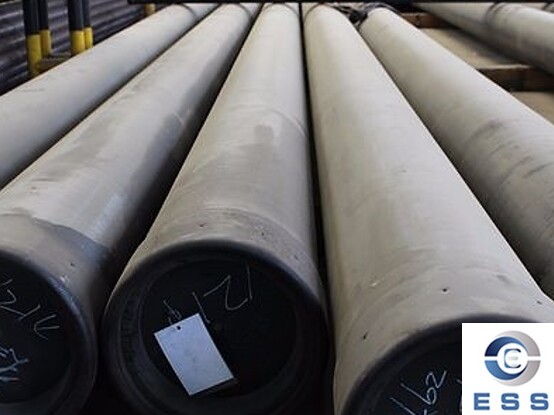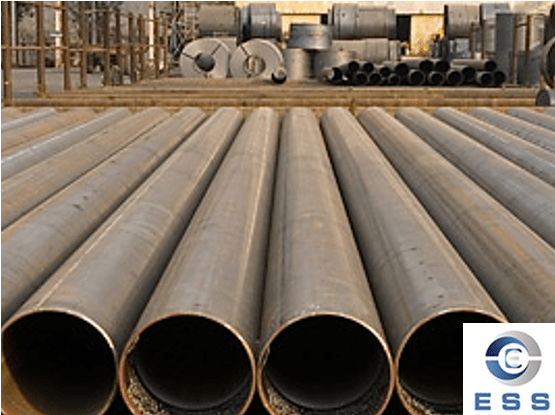
OCTG pipe is the
abbreviation of oil-specific pipe. It refers to a type of steel pipe specially
used for oil and gas extraction, most of which is the seamless
pipe, but the welded
pipe also account for a considerable proportion. OCTG pipes mainly include casing pipe, tubing and drill pipe,
which withstand high pressure, high temperature and corrosive fluids under
different working conditions to ensure the safety and efficiency of oil and gas
extraction.
Oil well pipes are mainly used in the
exploration and extraction of oil and gas, including tubing, casing pipe and
drill pipe. Tubing is used to transport oil from the oil layer to the ground,
casing pipe is used to fix the wall of the oil well, and drill pipe is used for
oil well drilling. The following will give you a detailed introduction to the
role of OCTG pipes in the oil and gas industry.
1. Oil and gas transportation and
downhole fluid management
Oil pipes are mainly used to transport
underground oil, natural gas or injection fluids to the ground to form a closed
channel to improve extraction efficiency. Since oil wells may contain corrosive
media (such as hydrogen sulfide H₂S, carbon dioxide CO₂ and high salt
water), oil pipes need to have good corrosion resistance and pressure
resistance.
To prevent leakage, oil pipes are usually
connected with precision threads or special joints to ensure sealing. In
high-temperature and high-pressure oil wells, offshore platforms and oil fields
in acidic environments, the material selection of oil pipes is particularly
important, and corrosion-resistant alloys or special coatings are usually used
to extend the service life.
2. Drilling operations and power
transmission
The drill pipe is one of the core
components in drilling operations. It connects the drilling rig and the drill
bit, and is responsible for power transmission, drilling fluid circulation and
high torque loads during the drilling process. The drill pipe must have high
strength, fatigue resistance and wear resistance because it rotates
continuously during the drilling process and is subjected to huge axial tension
and torque.
In order to improve the durability of the
drill pipe, its surface is usually phosphated, galvanized or ceramic sprayed to
enhance corrosion resistance. In deep well, horizontal well and directional
well drilling, high-strength and flexible drill pipe can significantly improve
drilling efficiency and operation safety.
3. Well support and stable oil well
structure
OCTG casing pipe is installed inside the
wellbore after drilling is completed. Its main function is to support the
wellbore wall, prevent the wellbore wall from collapsing, and isolate the
fluids in different formations. The downhole environment is complex, and the
formation pressure may cause the wellbore to be unstable. The existence of the
casing pipe can provide structural support to ensure the integrity of the
wellbore.
At the same time, the casing pipe can also
prevent the mutual penetration between groundwater, oil layers and gas layers,
avoiding resource waste and environmental pollution. According to the different
installation positions, the casing pipe can be divided into surface casing
pipe, intermediate casing pipe and production casing pipe, which work together
to ensure the long-term stable operation of the wellbore.
Summary
OCTG pipe is the basic equipment for oil
and gas extraction. Generally, the OCTG pipe is drilled through the drill pipe
to form a hole. After reaching the oil layer, the casing pipe is lowered and
cement is injected into the annular space between the casing pipe and the
wellbore wall to maintain the wellbore wall and seal the oil, gas and water
layers. Then, the oil layer is opened with a perforating gun according to the
requirements of oil field development to form a channel, and the oil pipe is
lowered. The oil is raised from the bottom of the oil well to the wellhead by
using a suitable induction method. It can be seen that OCTG pipe plays an
important role in the oil and gas industry, which not only determines the
success rate of drilling, but also affects the safety, economy and service life
of the entire oil well.













 Eastern Steel Manufacturing Co.,Ltd not only improve product production and sales services, but also provide additional value-added services. As long as you need, we can complete your specific needs together.
Eastern Steel Manufacturing Co.,Ltd not only improve product production and sales services, but also provide additional value-added services. As long as you need, we can complete your specific needs together.










